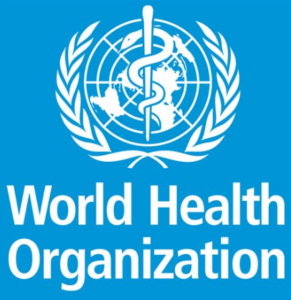Understanding the New Pandemic Treaty: What You Need to Know

In a significant move that has implications for public health policy worldwide, the World Health Organization (WHO) is finalizing its much-debated Pandemic Treaty. With over 190 nations on board, the treaty seeks to foster a united front during future pandemics, a goal that raises essential concerns about national sovereignty and governance. The Extreme Investor Network breaks down what this means for countries, economies, and global health.
A Daring Leap Towards Global Governance
WHO Director-General Dr. Tedros Adhanom Ghebreyesus heralded the agreement as a landmark achievement in global cooperation. His sentiments highlight a broader push for what is being dubbed "One Health," a holistic approach recognizing the interconnectedness of human, animal, and environmental health. However, critics argue that this collective agreement effectively cedes significant power to an unelected body, allowing a selected few to dictate responses to future health crises, which many fear could resemble governmental imposition of biological warfare.
Dr. Tedros’s close affiliations, such as with Klaus Schwab, founder of the World Economic Forum, cast a shadow over WHO’s impartiality. Schwab’s sudden resignation after treaty finalization adds a layer of intrigue, drawing attention to the intricate dynamics among global health authorities and influential elites.
What’s In the Treaty?
At the core of the treaty lies the notion of “One Health,” which, while noble in its intent, serves to elevate the prerogatives of the WHO and its partners: the Food and Agriculture Organization (FAO), the United Nations Environment Programme (UNEP), and the World Organization for Animal Health (WOAH). This “Quadripartite” partnership is designed to enact unified strategies under the guidance of the One Health High-Level Expert Panel (OHHLEP), reinforcing the WHO’s role as the ultimate authority on health matters.
But this newfound power comes at a price. The treaty establishes stringent financial obligations for manufacturers of pandemic-related products, demanding they allocate 10% of their production to the WHO at no cost, alongside a reduction of costs by an additional 10%. Furthermore, countries must contribute to a centralized financial mechanism (CFM), ostensibly to prepare for future pandemics.
International Funding Dynamics and Responsibilities
As countries are compelled to contribute to the CFM, developed nations will bear a disproportionate financial burden, funding the health preparations of less affluent countries under the premise of "common but differentiated responsibilities." This raises questions about accountability and the use of funds—who oversees this money, and how will it be distributed?
Private entities may soon find themselves contributing to these financial frameworks, amplifying the potential for increased taxation and regulation surrounding health-related products and services. As a stakeholder in this new paradigm, the average citizen may find greater economic implications that could stretch well beyond public health.
The Shadow of COVID-19
The pandemic exposed critical failures within the WHO, including alleged biases toward certain nations and the lack of transparency regarding health guidelines. Revelations from the White House have highlighted that recommendations like the six-foot rule were arbitrary and lack scientific grounding. The legitimacy of mask mandates and the devastating impact of lockdowns remain hotly debated topics, fueling distrust in institutions perceived as prioritizing political agendas over public health welfare.
A Call for Accountability
As we move into a landscape shaped by this new Pandemic Treaty, the absence of accountability remains a pressing concern. The COVID-19 crisis raised alarm bells—no individuals have faced consequences for the decisions that led to widespread social and economic hardships. The partnerships forming around pandemic response ignite fears of a monopolistic approach to health governance, especially given the links involving influential figures like Schwab and high-profile corporate partners.
Looking Ahead
The framework of the Pandemic Treaty suggests that future health crises will draw upon centralized authority, potentially compromising individual rights and local governance in favor of a one-size-fits-all methodology dictated by the WHO and its Quadripartite allies. As the year 2026 approaches—signaled as a potential pivot point for global health—questions loom on whether a new pandemic will emerge as the WHO’s predictions of “Disease X” take shape.
Conclusion: A New Era of Health Governance
At Extreme Investor Network, we understand that the implications of the Pandemic Treaty extend far beyond health—they touch on economics, governance, and global power dynamics. As we move into this uncharted territory, it is crucial to remain informed and critically assess how these changes will impact our rights as citizens and the nature of economic policies across the globe.
In an age where cross-border collaboration is essential yet riddled with complexities, the stakes have never been higher. Stay tuned as we continue to analyze the developments and their far-reaching consequences. Together, we can navigate this new landscape with insight and foresight.

